6 books about Scanlan, John
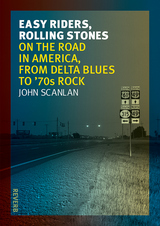
Easy Riders, Rolling Stones
On the Road in America, from Delta Blues to 70s Rock
John Scanlan
Reaktion Books, 2015
Easy Riders, Rolling Stones delves into the history of twentieth century American popular music to explore the emergence of 60s “road music.” This music—which includes styles like blues and R&B——took shape at pivotal moments in history and was made by artists and performers who were, in various ways, seekers after freedom. Whether journeying across the country, breaking free from real or imaginary confines, or in the throes of self-invention, these artists incorporated their experiences into scores of songs about travel and movement, as well as creating a new kind of road culture.
Starting in the Mississippi Delta and tracking the emblematic routes and highways of road music, John Scanlan explores the music and the life of movement it so often represented, identifying “the road” as the key to an existence that was uncompromising. He shows how the road became an inspiration for musicians like Jim Morrison and Bob Dylan and how these musicians also drew stimulus from a Beat movement that was equally enthralled with the possibilities of travel. He also shows how the quintessential American concepts of freedom and travel influenced English bands such as the Rolling Stones and Led Zeppelin. These bands may have been foreigners in the US, but they also found their spiritual home there—of blues and rock ‘n’ roll––and glimpsed the possibility of a new kind of existence, on the road.
Easy Riders, Rolling Stones is an entertaining, rich account of a key strand of American music history, and will appeal to both road music fans and music scholars who want to “head out on the highway.”
Starting in the Mississippi Delta and tracking the emblematic routes and highways of road music, John Scanlan explores the music and the life of movement it so often represented, identifying “the road” as the key to an existence that was uncompromising. He shows how the road became an inspiration for musicians like Jim Morrison and Bob Dylan and how these musicians also drew stimulus from a Beat movement that was equally enthralled with the possibilities of travel. He also shows how the quintessential American concepts of freedom and travel influenced English bands such as the Rolling Stones and Led Zeppelin. These bands may have been foreigners in the US, but they also found their spiritual home there—of blues and rock ‘n’ roll––and glimpsed the possibility of a new kind of existence, on the road.
Easy Riders, Rolling Stones is an entertaining, rich account of a key strand of American music history, and will appeal to both road music fans and music scholars who want to “head out on the highway.”
[more]
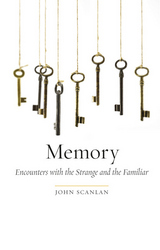
Memory
Encounters with the Strange and the Familiar
John Scanlan
Reaktion Books, 2013
When we think of getting older, we know we will slowly lose more and more of our memory—and with it, our sense of where we belong and how we connect to others. We might relax a little if we considered the improvements in computer data storage, which may lead us into a future when the limits of our memory become less constricting. In this book, John Scanlan explores the nature of memory and how we have come to live both with and within it, as well as what might come from memory becoming a process as simple as retrieving and reading data.
Probing the ways philosophers look at memory, Scanlan reveals that some argue that being human means having the ability to remember, to see oneself as a being in time, with a past and future. At the same time, he shows, our memories can undo our present sense of time and place by presenting us with our past lives. And in a digital age, we are immersed in a vast archive of data that not only colors our everyday experiences, but also supplies us with information on anything we might otherwise have forgotten—breaking down the distinction between the memories of the individual and the collective. Drawing on history, philosophy, and technology, Memory offers an engaging investigation of how we comprehend recollection and how memory, as a phenomenon, continually remakes everyday life.
[more]
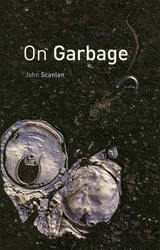
On Garbage
John Scanlan
Reaktion Books, 2005
How do we decide what is junk? The discarded remnants of our daily lives may no longer be useful to us, yet John Scanlan proposes in On Garbage that our trash is actually a treasure trove of artifacts that reveals intriguing insights into the modern human condition and the evolution of Western culture.
On Garbage is the first book to examine the detritus of Western culture in full range—not only material waste and ruin, but also residual or "broken" knowledge and the lingering remainders of cultural thought systems. Scanlan considers how Western philosophy, science, and technology attained mastery over nature through what can be seen as a prolonged act of cleansing, as scientists and philosophers weeded out incorrect, outmoded, or superseded knowledge. He also analyzes how disposal not only produces overwhelming mountains of waste, but creates dead bits of useless knowledge that permeate the reality of modern Western societies. He argues that physical and intellectual debris reveal new insights into the basic tenets of Western culture and, ultimately, that the abject reality of our disposable lives has led to us becoming the "garbage" of our times.
On Garbage is the first book to examine the detritus of Western culture in full range—not only material waste and ruin, but also residual or "broken" knowledge and the lingering remainders of cultural thought systems. Scanlan considers how Western philosophy, science, and technology attained mastery over nature through what can be seen as a prolonged act of cleansing, as scientists and philosophers weeded out incorrect, outmoded, or superseded knowledge. He also analyzes how disposal not only produces overwhelming mountains of waste, but creates dead bits of useless knowledge that permeate the reality of modern Western societies. He argues that physical and intellectual debris reveal new insights into the basic tenets of Western culture and, ultimately, that the abject reality of our disposable lives has led to us becoming the "garbage" of our times.
[more]
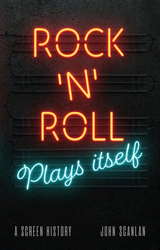
Rock ’n’ Roll Plays Itself
A Screen History
John Scanlan
Reaktion Books, 2022
A raucous cultural history of rock’s relationship with the moving image.
When rock ’n’ roll burst into life in the 1950s, the shockwaves echoed around the world, amplified by images of untamed youth projected on cinema screens. But for the performers themselves, corporate showbusiness remained very much in control, contriving a series of cash-in movies to exploit the new musical fad.
In this riveting cultural history, John Scanlan explores rock’s relationship with the moving image over seven decades in cinema, television, music videos, advertising, and YouTube. Along the way, he shows how rock was exploited, how it inspired film pioneers, and, not least, the film transformations it caused over more than half a century.
From Elvis Presley to David Bowie, and from Scorpio Rising to the films of Scorsese and DIY documentarists like Don Letts, this is a unique retelling of the story of rock—from birth to old age—through its onscreen life.
When rock ’n’ roll burst into life in the 1950s, the shockwaves echoed around the world, amplified by images of untamed youth projected on cinema screens. But for the performers themselves, corporate showbusiness remained very much in control, contriving a series of cash-in movies to exploit the new musical fad.
In this riveting cultural history, John Scanlan explores rock’s relationship with the moving image over seven decades in cinema, television, music videos, advertising, and YouTube. Along the way, he shows how rock was exploited, how it inspired film pioneers, and, not least, the film transformations it caused over more than half a century.
From Elvis Presley to David Bowie, and from Scorpio Rising to the films of Scorsese and DIY documentarists like Don Letts, this is a unique retelling of the story of rock—from birth to old age—through its onscreen life.
[more]
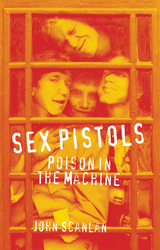
Sex Pistols
Poison in the Machine
John Scanlan
Reaktion Books, 2016
The explosive story of the Sex Pistols is now so familiar that the essence of what they represented has been lost in a fog of nostalgia and rock ’n’ roll cliché. In 1976 the rise of the Sex Pistols was regarded in apocalyptic terms, and the punks as visitors from an unwanted future bringing chaos and confusion. In this book, John Scanlan considers the Sex Pistols as the first successful art project of their manager, Malcolm McLaren, a vision born out of radical politics, boredom, and his deep and unrelenting talent for perverse opportunism. As Scanlan shows, McLaren deliberately set a collision course with establishments, both conservative and counter-cultural, and succeeded beyond his highest expectations.
Scanlan tells the story of how McLaren’s project—designed, in any case, to fail—foundered on the development of the Pistols into a great rock band and the inconvenient artistic emergence of John Lydon. Moving between London and New York, and with a fascinating cast of delinquents, petty criminals, and misfits, Sex Pistols: Poison in the Machine is not just a book about a band, it is about the times, the ideas, the coincidences, and the characters that made punk; that ended with the Sex Pistols—beaten, bloody, and overdosed—sensationally self-destructing on stage in San Francisco in January 1978; and that transformed popular culture throughout the world.
Scanlan tells the story of how McLaren’s project—designed, in any case, to fail—foundered on the development of the Pistols into a great rock band and the inconvenient artistic emergence of John Lydon. Moving between London and New York, and with a fascinating cast of delinquents, petty criminals, and misfits, Sex Pistols: Poison in the Machine is not just a book about a band, it is about the times, the ideas, the coincidences, and the characters that made punk; that ended with the Sex Pistols—beaten, bloody, and overdosed—sensationally self-destructing on stage in San Francisco in January 1978; and that transformed popular culture throughout the world.
[more]
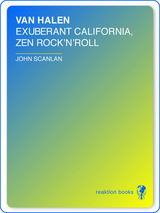
Van Halen
Exuberant California, Zen Rock'n'roll
John Scanlan
Reaktion Books, 2012
Van Halen are known for classic songs like “Runnin’ with the Devil,” "Panama,” and “Jump,” but also for the drama surrounding the exits of its former members. While many have attempted to discover the secrets of Van Halen through an analysis of their musical role models, John Scanlan looks at deeper aesthetic and philosophical influences in Van Halen, a groundbreaking account of this extraordinary band.
Following the band’s pursuit of the art of artlessness, Scanlan describes how they characterize what historian Kevin Starr terms “Zen California”—a state of mind and way of being that above all celebrates the now, and in rock and roll terms refers to the unregulated expenditure of energy and youthful exuberance destined to extinguish itself. Scanlan sheds light on key events and influences—the decaying of Hollywood in the 1970s; Ted Templeman’s work as a producer at Sunset Sound Studios; Top Jimmy, a blues rock singer who performed at the Zero Zero club; and the building of Eddie Van Halen’s Hollywood Hills studio in 1983—that show how 1970s California was the only time and place that Van Halen could have emerged. Along the way, Scanlan also explores the relationship between David Lee Roth and Eddie Van Halen, the climate of Southern California and its relation to a sense of cultural exuberance, the echoes of Beat aesthetics in David Lee Roth’s attitude to time, Eddie Van Halen’s bebop sensibility, and the real roots of the so-called “Brown” sound.
An illuminating look at a classic rock group and the cultural moment in which they came of age, Van Halen is a book for fans of the band and the history of rock and roll.
[more]
READERS
Browse our collection.
PUBLISHERS
See BiblioVault's publisher services.
STUDENT SERVICES
Files for college accessibility offices.
UChicago Accessibility Resources
home | accessibility | search | about | contact us
BiblioVault ® 2001 - 2024
The University of Chicago Press









